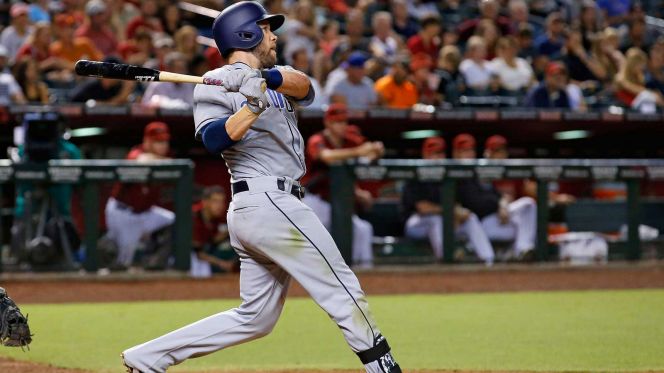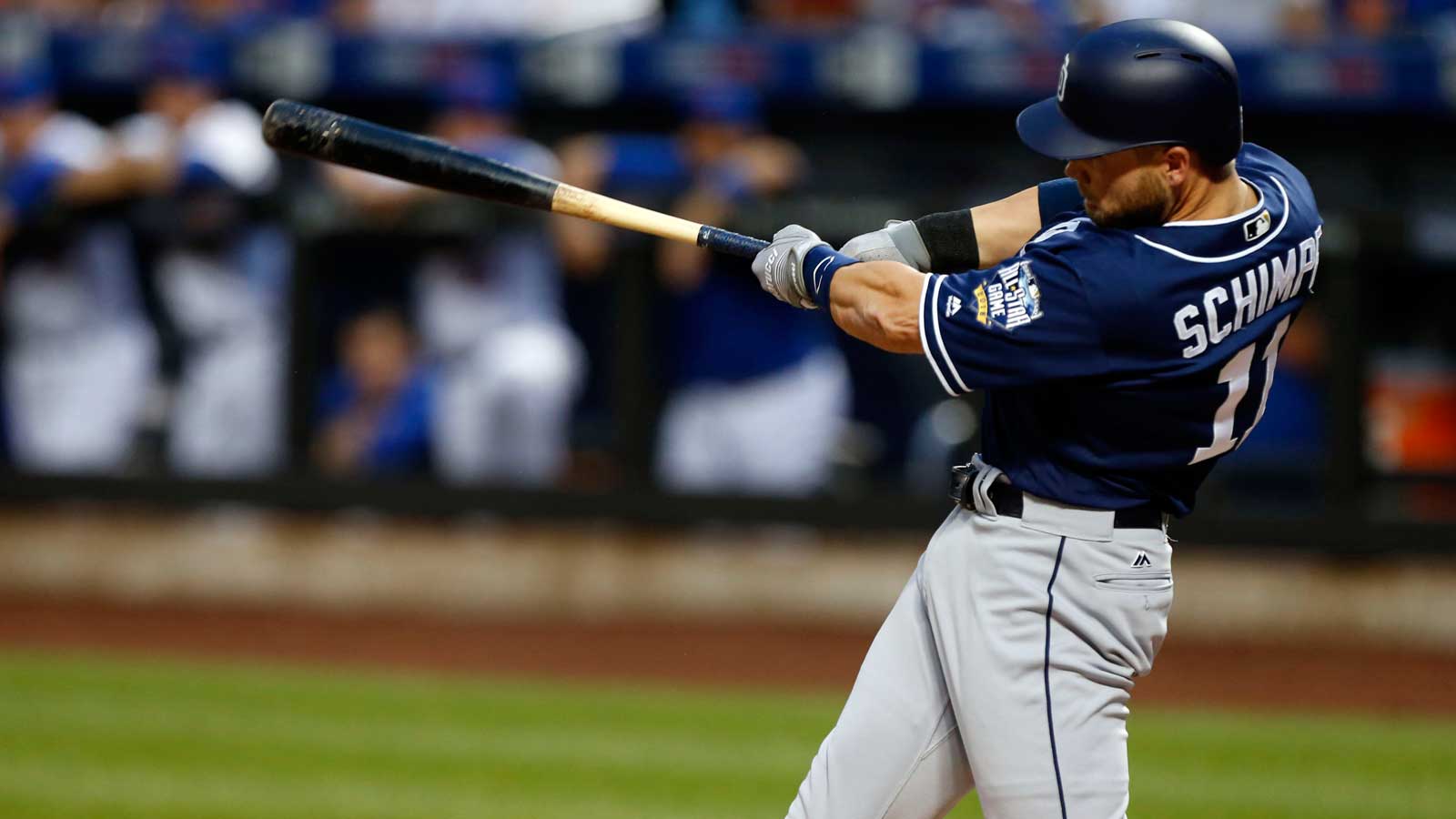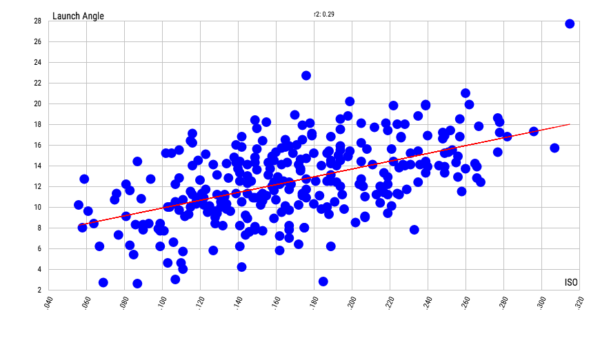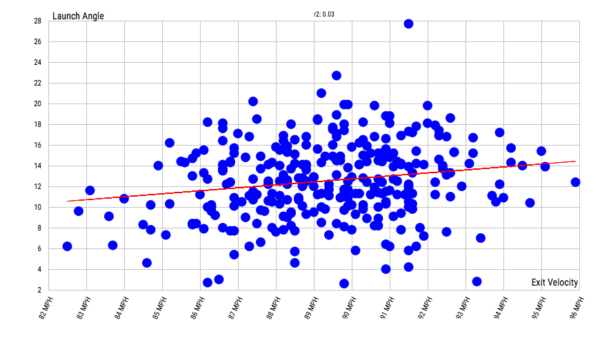Is Ryan Schimpf’s Breakout Sustainable?

Credit: USA Today Sports

With Opening Day finally here, there are a lot of questions surrounding the Padres. Given how barebones the 2017 roster is, it’s hard to see how things will turn out in San Diego. Now that the 25-man roster has been set, it’s more clear who the Padres will trust in 2017. The most interesting roster decision of all was the Padres handing the third base job to Ryan Schimpf, sending Cory Spangenberg down to Triple-A in the process.
With this move, the Padres front office has given Schimpf a vote of confidence. After he came onto the scene with 20 home runs in just over 300 plate appearances, Schimpf has earned himself a starting role in an Opening Day lineup. Despite not debuting in the big leagues until he was 28 years old, Schimpf has been given an opportunity, and run with it.
Sure, Schimpf only got the starting job after the trade of Jedd Gyorko and the injury to Cory Spangenberg, but at the end of the day this is now his job to lose. But questions still remain. Is Ryan Schimpf’s 2016 breakout sustainable? Can he continue to have such success by completing selling out for the long ball?
In 2016, Ryan Schimpf became the National League king of the three true outcomes, striking out in just shy of 32 percent of his plate appearances, walking in almost 13 percent of them, and hitting home runs in six percent of them. In total, Schimpf walked, struck out, or hit a home run in just over 50 percent of his total plate appearances in 2016. By selling out for power, Schimpf made himself into a power threat, at the expense of just about everything else.
When you look at Ryan Schimpf’s batted ball profile, it’s pretty clear what he was trying to do. Just under 65 percent of Schimpf’s batted balls were put in the air, of which 15 percent were of the infield fly variety. Among all players with at least 300 plate appearances, no player had a higher fly ball percentage than Schimpf, and it wasn’t even particularly close. The only other player over 50 percent was Brandon Moss of the St. Louis Cardinals.
Take it one step further and look at Schimpf’s ground ball profile, and no player hit fewer ground balls than Schimpf by percentage, as he put less than 20 percent of his batted balls on the ground. However, despite how much he sold out for fly balls, Schimpf still maintained a strong overall offensive profile. Obviously the strikeouts were high, but Schimpf still managed to be 29 percent better than league average by wRC+, proving there was still more to his game than home runs.
With all this information, it’s easy to see what kind of player Ryan Schimpf is. However, using more advanced statistics from Statcast allows us to see just how unique Schimpf was in 2016.


Both these charts show just how much of an outlier Schimpf is. In case you were wondering, Schimpf is the highest dot in each image, a full five feet higher in terms of launch angle than any other player measured by Statcast. On top of that, Schimpf had the highest ISO of any player in the league, higher than even David Ortiz. In terms of his in-game power and launch angle, Schimpf is unlike any player in baseball.
Now comes the real question, can Ryan Schimpf maintain such a heavy fly ball batted ball profile over an entire season? I think the answer has to be yes. Although his 2016 season was still a small sample, there is no reason to think Schimpf can’t continue to hit so many fly balls. However, there is still a good deal of uncertainty as to whether Schimpf can be as successful with that profile as he was in 2016. All it takes is more infield flies or lazy flies to tank Schimpf’s success. With Cory Spangenberg patiently waiting in Triple-A, the Padres could have a quick hook at the immediate sign of trouble. For Ryan Schimpf, 2017 is yet another make or break season. But he’s used to that.
Editorial and Prospect Writer for East Village Times. Twenty-five years young, Patrick has lived in San Diego for his entire life and has been a Padres fan nearly as long. Patrick lives for baseball and is always looking to learn new things about the game he loves through advanced stats.